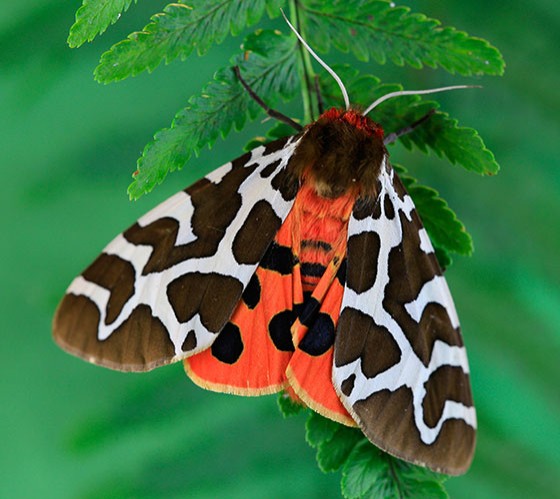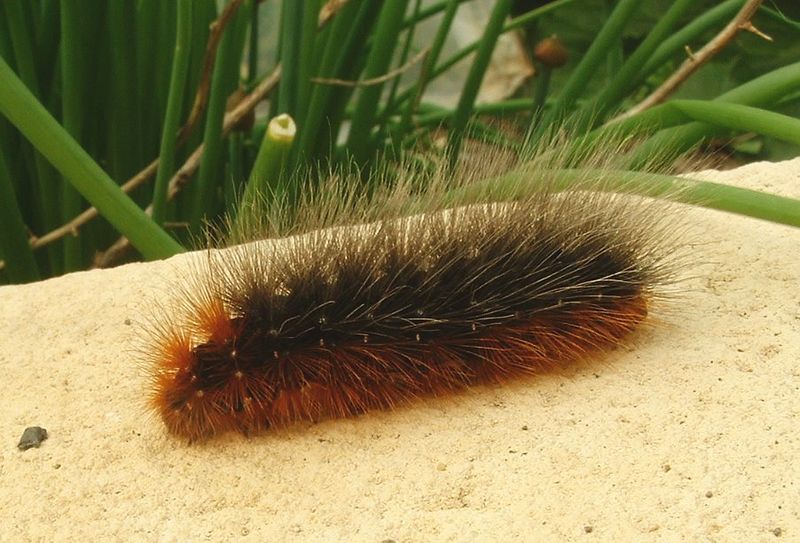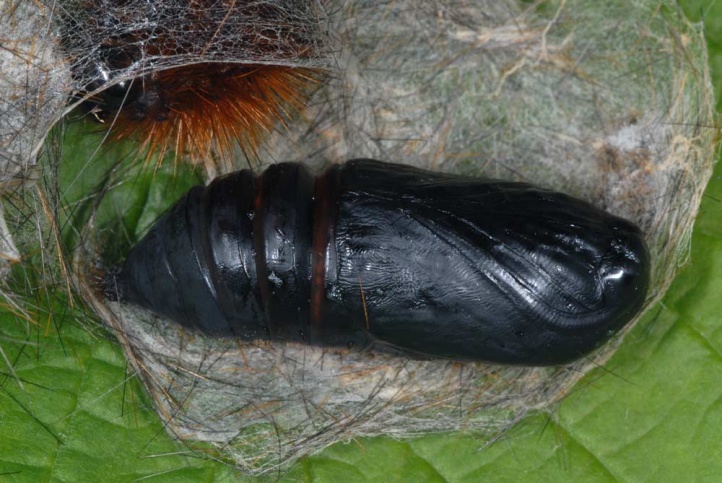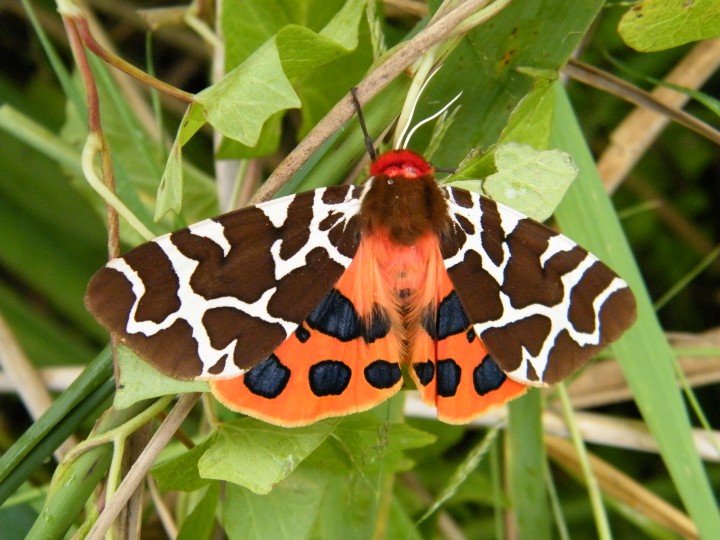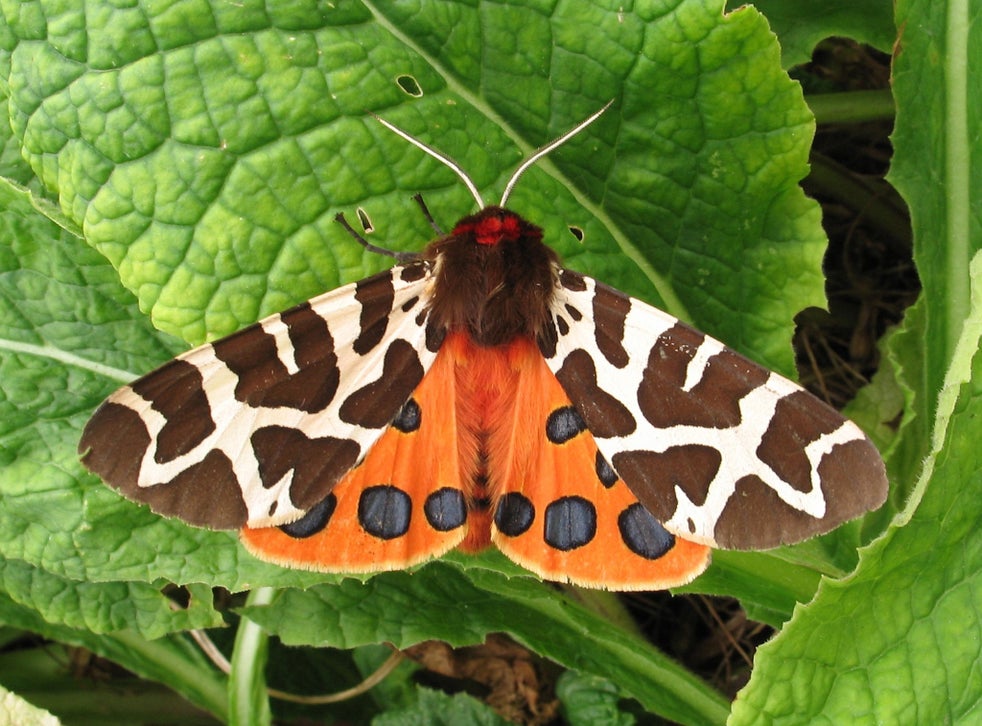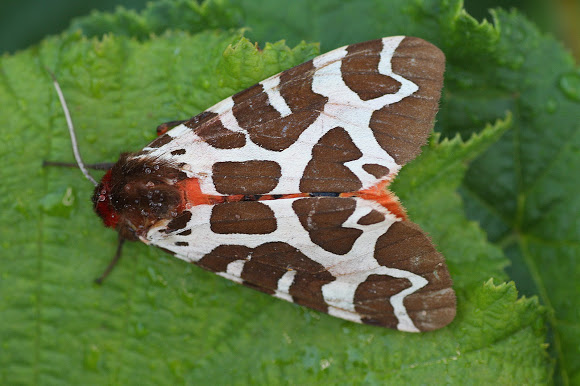Garden Tiger Moth (Arctia caja)
Garden tiger moth of the Erebidae family has a wide range, present in the northern parts of the US, and Canada, alongside Europe, also extending to north and central Asia. The bright and beautiful wings replicate a tiger’s patterns hence the name.
nhm.ac.uk
Scientific Classification
- Family: Erebidae
- Genus: Arctia
- Scientific Name: Arctia Caja
Description and Identification
Caterpillar
The large-sized larvae appear black with dense hairs covered all over their body, giving them a fuzzy look. Hence, commoners or observers often refer to them as ‘woolly bears.’ After growing up to a particular size, the caterpillars develop hollow tubes containing certain irritating compounds. They mostly feed on stinging nettles and several other garden plant varieties. The average size of the garden tiger moth larvae is 6 cm.
Adult Moth
Sexual Dimorphism: Not prominent
Color Appearance
Forewings: When opened, it is brown with patterns of white running across. When closed, there is no alteration in the coloration, and it is the same brown and white combination.
Hindwings: When opened, it is orange with big black dots scattered all over. When closed, only a tinge of orange is visible at the bottom, while the black spots cannot be seen.
The pattern stated above is the standard one. However, there are as many as 500 variations in the coloration, as French entomologist Charles Oberthur mentioned.
They also have a dark red abdomen, with about five segments marked in black.
Average Wingspan: 4.5 – 6.5 cm
Flight Pattern: Erratic
Season: July – August
Quick Facts
| Other Names | Great tiger moth |
| Distribution | Northern parts of United States, Canada, Europe, Northern Asia, Central Asia |
| Habitat | Sand dunes, meadows, woodland edges, hedgerows, and gardens |
| Predators | Adult: Birds, bats Larva: Parasitized by a few fly species |
| Lifespan of Adults | 1 – 2 weeks |
| Host Plants | Nettle, foxglove, and a variety of other plants growing in garden and meadows since they are generalists (consuming different types of plants) |
| Adult Diet | Mostly nectar |
Did You Know
- The prominent patterns on their wings, alongside the toxic fluid in the body, serve as a defensive mechanism, helping them keep predators at bay.
- The adult garden tiger moths often make rasping and squeaking sounds with their wings that have impacted bats’ behavior, keeping the latter away from this species.
- The garden tiger moth is not poisonous to humans, but the larvae’s hair could lead to skin irritation.
- Their numbers have declined by 30% since 1987 in the United Kingdom. So, the BAP (Biodiversity Action Plan) has been protecting them since 2007.
Scientific Classification
- Family: Erebidae
- Genus: Arctia
- Scientific Name: Arctia Caja

